|
|
 |
• Содержание выпуска •
• Mathematical Foundations of Programming •
• Methods for Optimal Control and Control Theory •
• Software and Hardware for Distributed Systems and Supercomputers •
• Artificial Intelligence, Intelligence Systems, Neural Networks •
• Supercomputing Software and Hardware •
Mathematical Foundations of Programming
Responsible for the Section: doctor of physico-mathematical Sciences
Nikolay Nepeivoda
On the left: assigned number of the paper, submission date, the number
of A5 pages contained in the paper, and the reference to the full-text
PDF
/r1/pdf.jpg) . .
|
Article #
1_2015
16
p.
/r2/pdf.jpg) PDF
PDF |
submitted on 14th
Dec 2014 displayed on
website on
28th
Jan
2015
Kovalyov
S.
Category-theoretic approach to algebraic computer systems design
A computational system is called algebraic if it contains
discrete co ntrolled postsilicon nodes. Category-theoretic approach
to design such systems is proposed aiming at efficient employing
mathematical methods to map computational problems to such system
architecture. Categories are constructed with algebraic
computational nodes and systems models as objects and specifications
of operations of integrating nodes into systems as morphisms. Finite
diagrams in such categories are formal algebraic computational
system architecture models. (In Russian).
Key words: algebraic computational system, semi-primal
algebra, structural category of algebras, mapping computational
problems to system architecture.
|
|
article citation |
http://psta.psiras.ru/read/psta2015_1_3-10.pdf |
|
DOI |
https://doi.org/10.25209/2079-3316-2015-6-1-3-10 |
|
Article #
16_2015
9
p.
/r2/pdf.jpg) PDF
PDF |
submitted on 14th
Dec 2014 displayed on
website on
26th
Feb
2015
Znamenskij
S.V.
A model and algorithm for sequence alignment
The change detection problem is aimed at identifying common and
different strings and usually has non-unique solutions. The
identification of the best alignment is canonically based on finding
a longest common subsequence (LCS) and is widely used for various
purposes. However, many recent version control systems prefer
alternative heuristic algorithms which not only are faster but
usually produce better alignment than finding an LCS. Two basic
shortcomings of known alignment algorithms are outlined in the
paper:
(1) LCS sometimes mistakenly consist of short uninformative common
strings;
(2) known alternative algorithms starts from a most informative
common string identification which sometimes suppress identification
of appropriately long sequence of slightly less informative common
strings.
The
sequence alignment problem is considered to be an abstract model for
changes detection in collaborative text editing designed to minimize
the probability of merge conflict. A new cost function is defined as
the probability of intersection between detected changes and random
string. It avoids both the mentioned shortcomings. The cubic
algorithm is proposed.
Key words: similarity of strings, sequence alignment,
software development, diff, LCS, edit distance, Levenshtein metric. |
|
article citation |
http://psta.psiras.ru/read/psta2015_1_189-197.pdf |
|
DOI |
https://doi.org/10.25209/2079-3316-2015-6-1-189-197 |
• Содержание выпуска •
• Mathematical Foundations of Programming •
• Methods for Optimal Control and Control Theory •
• Software and Hardware for Distributed Systems and Supercomputers •
• Artificial Intelligence, Intelligence Systems, Neural Networks •
• Supercomputing Software and Hardware •
|
 |
|
Adress: Ailamazyan Program Systems Institute of the Russian
Academy of Sciences, PSTA Online Journal, 4 a Peter the First Street,
Veskovo village, Pereslavl area, Yaroslavl region, 152021 Russia
Phone: +7-4852-695-228. E-mail:
info@psta.psiras.ru.
Website:
http://psta.psiras.ru
©
Electronic Scientific Journal "Program Systems: Theory and
Applications" 2010-2017
© Ailamazyan Program System Institute of RAS 2010-2018
 |
|


